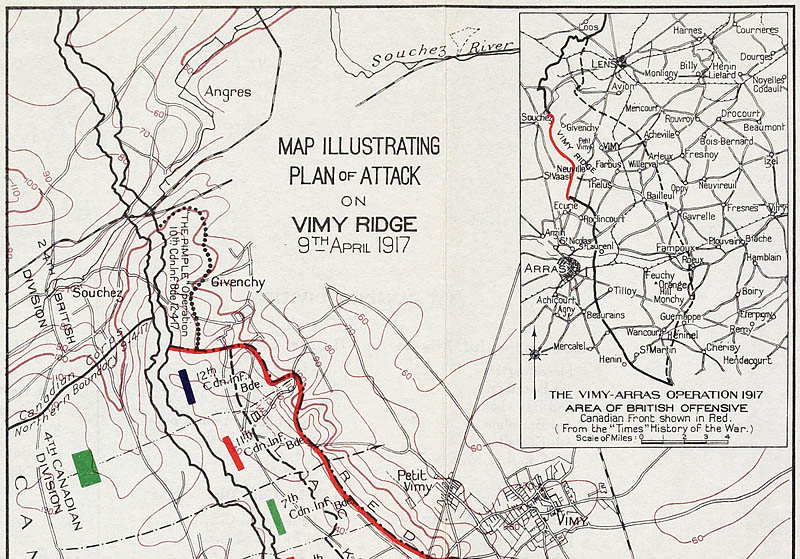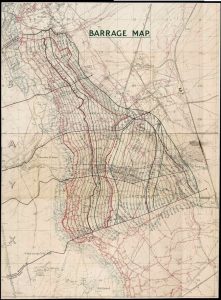The Battle of Vimy Ridge
Early in 1917, the Canadian Corps was tasked with the capture of Vimy Ridge. Several previous unsuccessful and costly attempts by the French and British Armies proved that Vimy Ridge was well defended by the Germans – who clearly intended to hold onto it. The Canadians had to apply the lessons learned from their own battle experience and that of their Allies in order to carefully plan an operation that would succeed.
Some argue that the Battle of Vimy Ridge was instrumental in the creation of a Canadian identity. Although it was indeed a proud moment for our young Canadian army, this battle did not end the war. In fact, the battle of Vimy Ridge was part of the larger French offensive of 1917, which was in fact a failure. The true end of the Great War only arrived more than a year and a half after the Battle of Vimy Ridge.
Assaulting infantry battalions had to locate the enemy. For the first time ever, not only the officers, but all soldiers were given details about their objectives. A total of 40,000 trench maps were printed and distributed to the attacking Canadians.
A “creeping barrage” was a method of coordinated artillery fire designed to create a “wall of steel” that moved forward slowly at a predictable rate ahead of the advancing troops. Soldiers practiced their timing to coordinate perfectly with the artillery barrage. This rate of advance became known as the “Vimy glide”.

